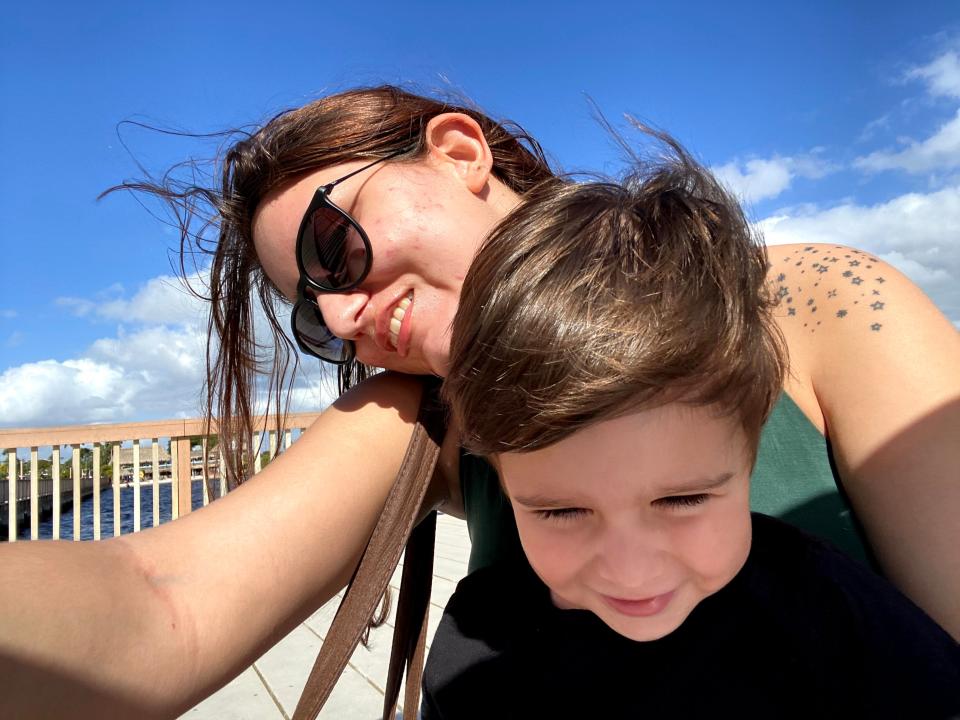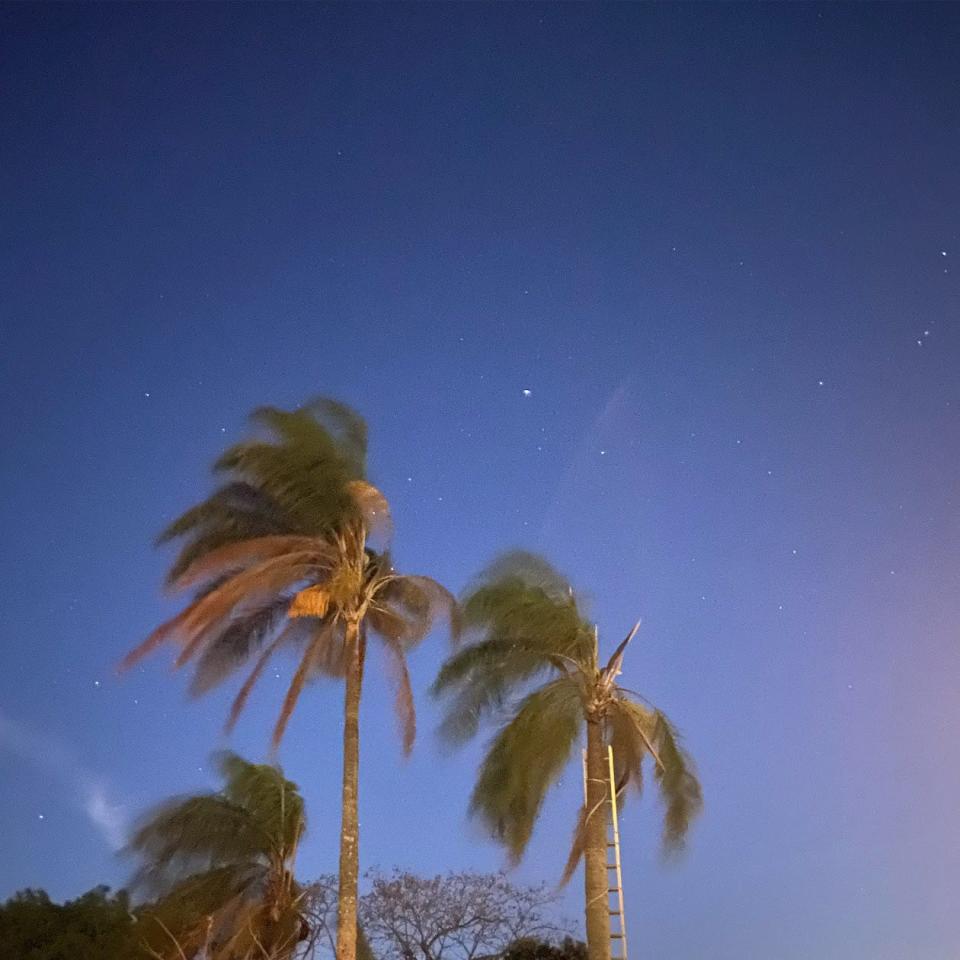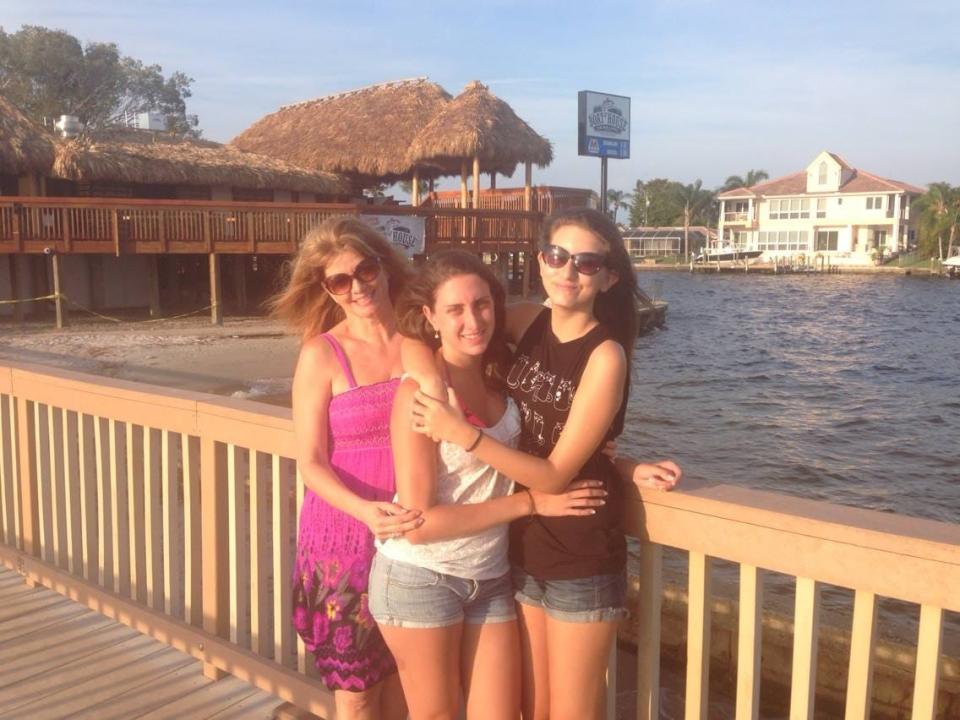Reporter's notebook: Covering Hurricane Ian created a whirlwind of emotion for me
Watching a Chinook helicopter speed over the Caloosahatchee River struck me hard. I didn't know exactly where it was going, but I knew that the National Guard's aerial presence meant that enough people were hurt, trapped, or dead.
This was Friday, Sept. 30. Two days after Hurricane Ian's landfall. I was in south Cape Coral with a press badge hanging from my neck — on assignment to report on Ian's aftermath in my hometown.
I grew up in the self-named waterfront wonderland. I learned how to kayak at the Yacht Club, annoyed teachers at Cape High, worked at the only movie theater in town (Marquee, when it always smelled like mildew before the remodel) and took Homecoming photos at Cape Harbor.
The constant in these life moments: my desire to be a journalist. When I was in grade school I wrote stories on stapled-together pieces of printer paper. In my pre-teen years, I took middle school broadcast class way too seriously. By the time I graduated high school, I was telling everyone about my soon-to-be journalism degree, dreaming of the day I would become a real reporter.
I just never considered the possibility of it happening in the Cape.
The storm
On Sept. 28, destructive, angry and massive Hurricane Ian made landfall in Cayo Costa, whipping torrential rains, deadly storm surges and winds clocking at 140 mph. As of Wednesday, Oct. 19, the Florida Medical Examiners Commission has 110 confirmed deaths attributed to Hurricane Ian.
Social media is inundated with heartbreaking imagery: Fort Myers Beach is unrecognizable. The islands, for a time, unreachable. For those that survived Ian: unforgettable.
I weathered the storm from Bradenton, despite my family and friends' insistence on evacuating south to Fort Myers, where my mom and brother live now (as a reminder, Ian's eye was predicted to beeline towards Sarasota and Manatee the day before landfall).
At the Sarasota Herald-Tribune, we were incredibly busy before, during and after the storm, and that was with our coverage areas being miraculously spared the worst from Ian's destruction.

The day after Ian's landfall — Thursday, Sept. 29 — I was on the road by 8 a.m. for field reporting to survey damage in Manatee County. At that point, I hadn't heard from my mother or brother since 6 p.m. the night before. I was dizzy with stress from her absence and the amount of images showing Cape Coral underwater and Fort Myers ripped apart. But I had a job to do. I told myself that I had no reason to believe that they were anything but okay.
By that evening, my mom found a neighbor with enough signal to send a text message to my sister about her well-being. My brother, too. The relief was immeasurable. We were so incredibly fortunate when so many weren't. This includes members of the USA TODAY Network-Florida family. I know journalists at The News-Press and the Naples Daily News lost their homes and were stretched thin trying to address the overwhelming amount of shock and grief swallowing Lee and Collier County.
I offered going to Cape Coral, both wanting to help the team and needing to see the Cape with my own eyes. So I went.

The aftermath
My cell signal disappeared by the time I rode through Venice. I drove carefully, dodging chunks of debris and skimming receding floodwaters. When I reached Cape Coral, my heart sunk.
Even without seeing totally collapsed structures like the entirety of Fort Myers Beach, it was evident that disaster struck. Some buildings still had the scars of flooding, with water lines giving away the high storm surge levels. Not a single traffic light was working — forcing drivers to rely on trust or members of the National Guard to pass intersections.
It wasn't the first hurricane to hit Cape Coral, of course. I remember my family evacuating for Charley and staying for the rest until I moved away for college in 2018. I huddled with my best friend and her parents during Hurricane Irma, turning the power outage into an indoor camping experience.
But Ian was different.
The psychic building I've driven by a million times crumbled. Businesses looked like smeared art — missing signage or windows or pieces of roof. Some residential streets were blocked by trees. Power lines slumped like ratty curtains.
I went to my childhood home because I needed to see how it fared. The structure stood tall, but I noticed that most of the trees and foliage my mother planted more than a decade ago were torn from the ground. The pool cage we installed was mangled, barely holding up a fallen power line.
I drove to familiar spots to talk to residents as a journalist and took photos. I spoke with a mother who declined being quoted but cried when I asked her how the storm sounded while she was sheltered. I interviewed two men who were single-handedly cleaning up their condominium lot. I passed neighbors catching up, checking in. I spotted lineman hoisted in the air.
I made personal stops, too.

A former co-worker messaged me asking if I could go to Iona in Fort Myers to see if her parents were alive and well. She had not heard from them since Wednesday. A couple friends from high school had moms who stayed during Ian — I went to those houses as a messenger and comforter.
I even got a Twitter message from a high school classmate expressing concern for another friend. This person stayed on Pine Island during Ian with his parents and was trapped. I did the only thing that made sense in the moment: calling in a wellness check to the Sheriff's Office for a person I haven't spoken to in years.
All this, and I drove back north the same day to write and file my story. My commute — one I take regularly visiting my mom — was double the length due to I-75 flooding near North Port.
It was a lot.
The toll
The Herald-Tribune’s executive editor sent an email this week stressing the long, grueling stretch of work Hurricane Ian bestowed upon us, directing the newsroom to mental health resources. I read it and felt reassured working for someone who cared about us but I also felt immensely guilty.
My job is to collect the necessary details for an audience’s independent absorption of fact and storytelling. Hurricane Ian disrupted the journalist’s role of observer — dragging us into the narrative instead. It was no longer about bearing witness, but unwittingly taking part as victim, survivor, and griever.

And this is me being lucky. My work suddenly became too intimate, but I could still close my laptop and recharge behind four walls. My family was safe. My paycheck stable. My power — eventually — on.
But I also don't know how to emphasize the emotional and mental impact of having to witness human suffering all day, every day as a public servant. Whether that's in the role of journalism or firefighting or nursing, it's incredibly difficult when the emotions between personal life and work bleed together.
I'm okay in one way and sad in another. It hurts to see the Yacht Club Beach decimated. It's awful to see yet another GoFundMe asking for help for someone displaced. It aches to dip into the past lives of the deceased to try to honor them in an obituary they didn't know a stranger would be writing.
It is a hard time for so many, but there is some light. While there are helicopters in the sky, there are neighbors on the ground. The call to help was one overwhelmingly answered, from Cape Coral to Port Charlotte to Venice. Even after the sun sunk, we rose with it the next day.
Mother Nature showed her strength. We showed our resilience.
Stefania Lugli covers a little of everything for the Herald-Tribune. You can contact her at slugli@heraldtribune.com or dm her on Twitter at @steflugli. She also encourages readers to support the dedicated journalists at The Sarasota Herald-Tribune, The News-Press or The Naples Daily News by purchasing a subscription to your local newsroom.
This article originally appeared on Fort Myers News-Press: Hurricane Ian: Sarasota Herald-Tribune reporter reflects on experience

